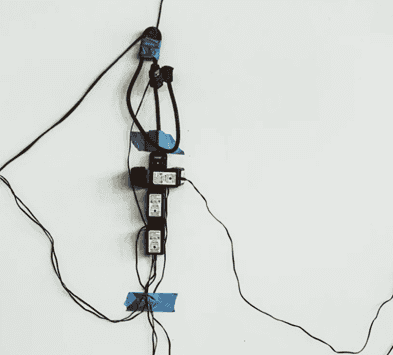Extension leads are commonly used in households and workplaces to provide additional power outlets. However, there has been a long-standing debate on whether they are safe to use or not. While extension leads provide convenience, they can also pose a risk of fire or electric shock if not used properly.
It is essential to understand the potential risks associated with extension leads and how to use them safely. This article aims to provide a comprehensive guide on the safety measures that should be taken when using an extension lead.
It will cover the common causes of extension lead accidents, the signs of a faulty extension lead, and the precautions that can be taken to prevent accidents from happening. By following these guidelines, users can ensure that they are using extension leads safely and avoid any potential hazards.
- Safety Measures for Using Extension Leads
- Preventing Overloading
- Best Practices for Extension Lead Safety
- Legal and Compliance Considerations
- Emergency Response
Safety Measures for Using Extension Leads
When using extension leads, it is important to take safety measures to prevent electrical hazards. Here are some tips to keep in mind:
- Always inspect the extension lead before use. Check for any damage or wear and tear, such as frayed wires or cracks in the casing. If you notice any damage, do not use the lead and replace it immediately.
- Make sure the extension lead is rated for the intended use. Check the label for the maximum load capacity and make sure it can handle the wattage of the devices you will be using. Overloading an extension lead can cause it to overheat and start a fire.
- Do not run extension leads under carpets or rugs. This can cause the wires to overheat and create a fire hazard. Instead, run the lead along walls or baseboards, or use a cable cover to protect the wires.
- Keep extension leads away from water and moisture. Do not use them outdoors unless they are specifically designed for outdoor use. If you need to use an extension lead in a damp area, use a residual current device (RCD) to protect against electric shocks.
- Do not plug one extension lead into another. This can cause overloading and overheating, which can lead to a fire. Instead, use a multi-socket adaptor with surge protection.
By following these safety measures, you can use extension leads safely and reduce the risk of electrical hazards.
Preventing Overloading
Extension leads are a convenient way to increase the number of electrical devices that can be used in a room, but it is important to use them safely. Overloading an extension lead can cause it to overheat, potentially leading to a fire. To prevent overloading, follow these tips:
- Check the maximum load of the extension lead before plugging in devices. This information can usually be found on a label on the lead itself.
- Avoid plugging high wattage devices, such as heaters or hair dryers, into the same extension lead as other devices. Instead, use a separate extension lead for these devices.
- Do not “daisy chain” extension leads by plugging one into another. This can cause the leads to overheat and become a fire hazard.
- Consider using a surge-protected extension lead to protect your devices from power surges and voltage spikes.
By following these tips, you can use extension leads safely and reduce the risk of overloading and fire.
Best Practices for Extension Lead Safety
To ensure the safe use of extension leads, it is important to follow some best practices. Here are a few tips to keep in mind:
- Always inspect the extension lead before use. Check for any damage, such as frayed wires or cracks in the plug or socket. Do not use a damaged extension lead.
- Do not overload the extension lead. Each extension lead has a maximum load capacity, which is usually stated on the packaging or the lead itself. Do not exceed this capacity, as it can cause overheating and potentially start a fire.
- Do not run extension leads under carpets or rugs, or through doorways or windows. This can cause damage to the lead and increase the risk of tripping or electrical shock.
- Keep extension leads away from water and damp areas. Do not use them outdoors unless they are specifically designed for outdoor use.
- Do not plug one extension lead into another, or use a “block adaptor” to increase the number of sockets. This can overload the lead and increase the risk of fire.
- Always unplug the extension lead when not in use, and do not leave it plugged in overnight or when you are away from home.
By following these best practices, you can help ensure the safe use of extension leads and reduce the risk of electrical accidents.
Legal and Compliance Considerations
When it comes to using extension leads, there are several legal and compliance considerations that should be taken into account to ensure safety.
Firstly, it is important to ensure that the extension lead has been tested and approved by a reputable testing body, such as the British Standards Institution (BSI) or Underwriters Laboratories (UL). This will ensure that the extension lead meets the necessary safety standards and is safe to use.
It is also important to ensure that the extension lead is used in accordance with the manufacturer’s instructions and any relevant safety guidelines. This may include ensuring that the extension lead is not overloaded, that it is not used in wet or damp conditions, and that it is not left unattended while in use.
In addition, it is important to ensure that the extension lead is regularly inspected and maintained to ensure that it remains safe to use. This may include checking for any signs of damage, such as frayed wires or loose connections, and replacing the extension lead if necessary.
Finally, it is important to ensure that the extension lead is used in compliance with any relevant legislation or regulations, such as the Health and Safety at Work Act or the Electricity at Work Regulations. This may include ensuring that the extension lead is used by a competent person and that appropriate risk assessments are carried out before use.
By taking these legal and compliance considerations into account, it is possible to ensure that extension leads are used safely and responsibly, reducing the risk of accidents and injuries.
Emergency Response
In case of an emergency, it’s important to know what to do to keep yourself and others safe. Here are some tips to follow:
- Turn off the power: If you suspect that an extension lead is causing a fire or shock hazard, turn off the power at the main switchboard immediately. This will help prevent further damage or injury.
- Call emergency services: If there is a fire or someone is injured, call emergency services right away. Be sure to provide them with your location and any relevant details about the situation.
- Do not touch the person or equipment: If someone has been electrocuted, do not touch them or the equipment they are in contact with. You could also get electrocuted if you touch them or the equipment. Instead, turn off the power and call emergency services.
- Use a fire extinguisher: If there is a small fire, use a fire extinguisher to put it out. Make sure you know how to use the fire extinguisher before an emergency occurs.
- Evacuate the area: If the situation is too dangerous or you are unable to control it, evacuate the area immediately. Make sure everyone else in the area is aware of the danger and follows you out.
Remember, prevention is always better than cure. Follow the safety tips mentioned earlier to minimize the risk of emergencies occurring in the first place.







